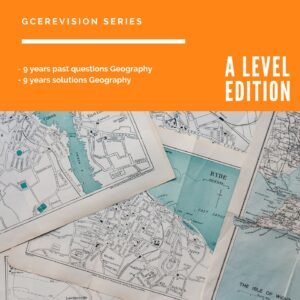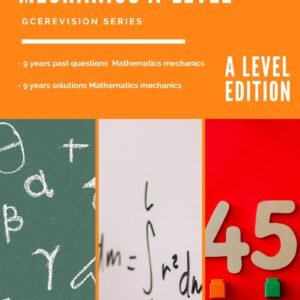Cameroon GCE A/L June 2019 ECONOMICS 3
Cameroon GCE A/L June 2019 ECONOMICS 3
Economics 3
0725
CAMEROON GENERAL CERTIFICATE OF EDUCATION BOARD
General Certificate of Education Examination
JUNE 2019
ADVANCED LEVEL
| Subject Title | ECONOMICS |
| Paper No./Title | 3 |
| Subject Code No | 0725 |
1Hour 45 minutes
INSTRUCTIONS TO CANDIDATES
Answer ANY THREE questions. All questions carry equal marks.
You are advised to spend the first fifteen minutes reading the paper.
In calculations you are advised to show all the steps in your working
You are reminded of the necessity for good English and orderly presentation in your answers.
Calculators are allowed.
- In a market economy people and firms act in their own interest to answer the what, how and for whom questions. In economic terms, a market is an arrangement that allows buyers and sellers to come together in order to exchange goods and services. A market might be in a specific location, such as a farmer’s market or a flea market. As long as a mechanism exists for buyers and sellers to come together, a market can exist. In a market, people’s decision act as votes… Because products are always looking for goods and services that consumers will buy, the consumers play a key role in determining what to produce.
Source: Adapted from Economics, Principles and Practices by Gary E clayton, page 36
- State four characteristics of market economy (4 marks)
- What do you understand by the statement, “In a market, people’s decision act as votes?” (4 marks)
- Which economic term is used to describe the role the consumer plays in determining what to produce in a market economy? (2 marks)
- Enumerate four disadvantages of market economy. (4 marks)
- Briefly explain what is meant by the what, how and for whom questions in the passage (2 + 2 + 2 marks)
- Due to the high level of domestic inflation, a government decides to protect the lower-income groups by setting maximum retail prices for certain essential foodstuffs. The existing equilibrium price of such foodstuff is 1,500 FCFA per unit
(a) With the use of a diagram, illustrate and state the effect on the market for this commodity if the maximum price is set at:
- 1,500 FCFA
- 1,300 FCFA
- What other name is given to the maximum price? (6 marks)
- List four consequences for a maximum price legislation. (2 marks)
- State one strategy the government can use to make the implementation of this policy effective. (2 marks)
- Define the terms black market price. Illustrate it on the diagram in a) above. (4 marks)
- Identify two areas of economic activity where government can apply this price control legislation (2 marks)
- TRADE UNIONS AND COLLECTIVE BARGAINING.
“A number of workers have their wages and salaries influenced by some kind of collective bargaining procedure. The individual worker is in a weak bargaining position in relation to his/her employer; the main purpose of a trade union is to remove this weakness by forcing the employer(s) to negotiate with representatives of the whole, or a proportion of the labor force. Unions also provide a channel of communication between workers and employer(s)…”
Source: Stanlake’s Introductory Economics by S.J Grant, 7th Edition, page 172.
- Define:(i) Collective bargaining (2 marks)
(ii) A trade union (2 marks)
(b) State any two advantages for a worker belonging to a trade union (2 marks)
(c) (i) Enumerate four factors that can weaken the powers of a trade union (4 marks)
(ii) State four bases of higher wage claims by trade unions (4 marks)
(d) (i) List any methods of wage payment (2 marks)
(ii) Give four reasons why two cleaners in the same firm may earn different wages. (4 marks)
- The table below gives information on the tax system of a given country.
| Personal income (FCFA) | Personal income tax (FCFA) | ART (%) | MRT (%) |
| 0 | 0 | / | / |
| 40.000 | 600 | 1.5 | 1.5 |
| 60.000 | 2.000 | 3.3 | 7 |
| 120.000 | 8000 | ||
| 200.000 | 18.000 | ||
| 300.000 | 35000 | ||
| 500.000 | 80.000 |
(a) Define
(i) The average tax rate (ART) (2 marks)
(ii) the marginal tax rate (MRT) (2 marks)
(b) Complete the table above (8 marks)
(c) Which tax system is represented by (b) above? Justify your answer (4 marks)
(d) State four reasons why the government imposes taxes (4 marks)
- In a given hypothetical economy, the following values obtain (figure in million FCFA)
Investment = 520
Government spending = 800
Consumption = 80% of disposable income
Exports = 600
Imports = 20% of income
Income tax = 50% of income
There are no indirect taxes
- Which type of economy is implied by the above statistics? (2 marks)
- Calculate the equilibrium level of income (4 marks)
- (i) Determine the total value of leakage for this economy. (2 marks)
(ii) What is the country’s balance of payment situation? (3 marks)
d. (i) What is the value of the multiplier in this economy? (4 marks)
(ii) State two factors that influence the value of the multiplier (2 marks)
e. If the government wishes to increase national income by 1,200 million FCFA by how much should it increase its own spending (3 marks)








George
September 7, 2019
Please try to answer the question and show us how to download
Oru Jonathan
October 27, 2019
Please I need the answers for number 5
T- frank
October 27, 2019
download our app called "kawlo" on playstore and get access to solutions and answers to past questions
Sylvester
March 30, 2020
Your app is boring
Iselle kelvin
June 9, 2022
Please answer number 5 question
Cute angel
May 31, 2023
Good